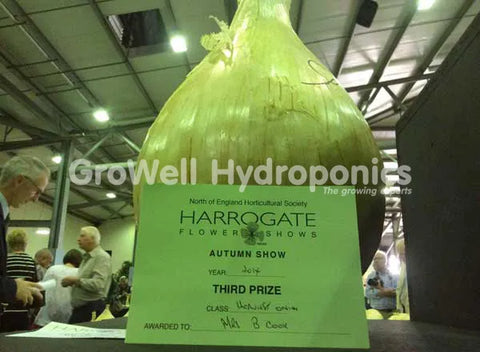
13 New Year's Resolutions You Should Make
Struggling for New Year's resolutions this year?
Forget the diets, exercise regimes and promises of sobriety - make 2016 the year you reform your growing habits! Now's your chance to turn over a new leaf.
1. Check for Pests Every 5 Days
Pests are a common problem in grow rooms. Even in closed loop set ups they can sneak in through ducting and hitch a ride on your clothes.
Use a magnifying glass to get a close look at plants when you check for pests.
It’s also worth using yellow sticky traps. Flying insects stick to them, so you can identify the offenders and start fighting the problem immediately.
2. Introduce Spider Mite Predator Sachets Every 3 - 4 Weeks
Spider mites are a big problem. Introduce their predators to your grow room to prevent any infestations.
You can buy spider mite predators for just £1.25 per sachet – that’s nothing!
All you need is 1 - 2 sachets per plant. These sachets will release predators slowly over 2 weeks to prevent any problems from occurring. If you are unlucky enough to get an infestation, use a different type of spider mite.
3. Regularly Clean and Replace your Lamps and Reflectors
Loss in light is directly proportional to loss in yields.
So every 1% of light you lose results in a 1% loss in yields.
So when should you replace your reflectors and lamps? When it costs you more in yields not to!
This’ll be different for every brand. As an absolute minimum, you should replace:
Reflectors: At least every year
Lamps: Every: 5,000 hrs (HPS), 4,000 hrs (CDM), 3000 hrs (MH) or 30,000 hrs (LEP)
As for our bestselling lamps, most people replace them:
• BAY6 lamps: Every 3 months
• Grolux lamps: Every 6 months
• Gavita lamps: Every 12 months
Make sure you regularly clean your lamps and reflectors, too.
4. Only use a Humidifier with RO water
Tap water’s full of minerals. If you use tap water with a humidifier, you’ll get mineral deposits on your reflectors, lamps and carbon filters.
After just 3 months of using hard water with a humidifier, your reflector will lose at least 10% of reflectivity.
An RO (reverse osmosis) filter will remove impurities to prolong the life of your lamps, reflectors and carbon filters.
5. Aim for 20 – 30% Run Off with Every Feed
When you feed your plants, some water should come out of the bottom of your pots. That’s run off.
Run off flushes out nutrients left over from your last feed.
Without run off, nutrients can accumulate and cause you problems with overfeeding or nutrient lockout.
You should aim for 20 – 30% run off (if you put 1 Litre in, 200 – 300mL should come out).
It’s important that you remove all the run off before it can reabsorbed by your pots. A good irrigation system will take care of this.
6. Put your pH Pen in a KCL Solution
If you leave pH probes to dry out, they gradually become imprecise and ineffective.
Prolong the life and accuracy of your pH pen by filling the cap with KCL solution when storing it between pH checks.
7. Clean your Hydroponic System and Equipment After Use
To prevent blockages, salt build ups, pests and diseases, it’s important to clean and sterilise your growing equipment and hydroponic systems between each crop.
Try Oxy-Plus.
When added to your tank, it releases oxygen atoms. These oxygen atoms sterilise equipment and attack viruses and fungal spores.
Make sure that you dilute it at a rate of 15mL per litre when sterilising.
8. Monitor your pH
The pH of your nutrient solution should always be between 5.5 and 6.5 (ideally 6).
If your feed is outside this range, some nutrients can no longer be absorbed by your plants.
If using a recirculating hydroponic system, the pH of your solution will change as plants absorb nutrients.
Make sure you routinely check and adjust the pH level of your solution with a pH pen or pH meter. If it drifts outside the safe range, tweak it.
9. Check your Conductivity Levels
Monitoring your conductivity (EC/CF) levels is all about portion control – your CF reading tells you how strong your nutrient solution is.
The stronger the nutrient solution the higher the CF reading will be.
If you don’t own a conductivity meter, you basically don’t know how much you’re feeding your plants.
That’s madness.
• Aim for: 6 – 12 (young plants), 10 – 16 (establishing plants) & 15 – 20 (mature plants)
• This will vary, depending on how hard your water is.
10. Keep your Temperature within the Ideal Range
Your ideal temperature depends on what you’re growing.
However, on average, your target temperature should be between:
• 24oC and 28oC (during the day/lights on)
• 22oC and 23oC (during the night/lights off)
To ensure you always stay within the safe range, use a heater that has an inbuilt thermostat. Simply set your target temperatures (with a temperature meter) and the heater will take care of the rest.
11. Keep your Humidity Within the Ideal Range
It’s a myth that grow rooms should be dry - every grower should use a humidifier.
While too much moisture and lack of ventilation can encourage fungal diseases and mildew, along with stem and root infection, some moisture will actually aid plant growth.
If there is more moisture in the air, your plants lose less water, meaning that the energy they’d normally spend replenishing water will be redirected elsewhere.
Depending on the temperature of your grow room, your relative humidity level should be:
• 70 – 85% (cuttings and seedlings)
• 65 – 75% (vegetative growth)
• 45 – 65% (flowering/fruiting)
To get an exact figure, see our previous post.
12. Stop Using Magnetic Ballasts
Magnetic ballasts are big and bulky and just aren't as good as digital ballasts. They’re not as good at regulating how much power is sent to your grow lamps.
With a magnetic ballast, every time you switch your grow light on, there's a sudden power surge that speeds up lamp degradation over time. You won't get this with a digital ballasts.
Magnetic ballasts also produce a lot more heat and use a lot of energy.
If you haven’t switched to digital ballasts yet, do it now!
Digital ballasts:
• Control how much light is sent to your bulb
• Transform incoming voltage up or down
• Prolong the life of your lamp (no power surges)
• Are efficient to run
• Allow you to adjust your light output

13. Try Something New!
If it ain’t broke don’t fix it, right?
Wrong.
There’s always room to improve, and technology is moving forward every day.
Just look at the above picture to see what you can achieve (for the record, this grower used Ecothrive Charge).
So do yourself and your plants a favour this year – try something new! Test a new product, monitor your results.
Remember, growing indoors is a hobby. Enjoy it!




